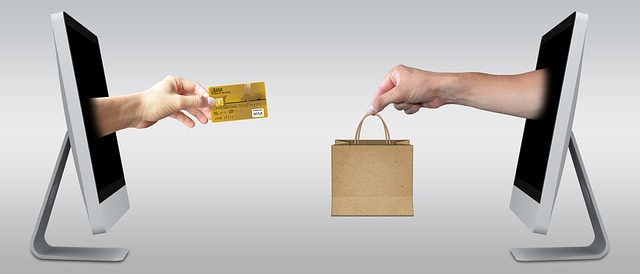
7 Online Shopping Trends for Marketing
17 November 2017
By limenotlemon
Online Shopping Trends
Online shopping undoubtedly has changed how we perceived commerce. In today’s world, approximately 80 percent of the population said they have used the internet to purchase something; a great number of digital natives even said they prefer online shopping as it makes their life easier in a lot of ways. Now that people have depended so much on the internet to make a purchase, there are certain trends in every year that make the world of e-commerce growing immensely.

You can see the trends of online shopping as retailers’ response to meet the expectation of their customers. But, from the trends growing within the year, you can also get some useful inspiration to predict how it will turn out in the next couple of years and what you could benefit from it in order to grow your business. So, without further ado, here are 7 significant online shopping trends that you can learn to help to create brilliant marketing strategies.
1. It’s all about pleasing the millennials
Some people might think millennials are the best generation or they’re merely just a bunch of spoiled kids. Regardless, as retailers, you have the obligation to start catering your business to them. Millenials have been leading a change in purchase trends lately. For millennials, smartphone, which they carry everywhere they go, is the primary source of all the information, from news to a great deal of purchase offer in social media.
When it comes to online shopping, millennials do have the tendency to stick to certain brands. In fact, they’re willing to give their money to brands that they can identify. According to study, 68 percent of millennials say they are more likely to purchase products from brands that are aware of social issues. Approximately around 58 percent of them say they’re even willing to pay a higher price for brands that are helping with causes they support.
However, they’re not that indifference about price. Even though the study found they are considerably loyal human beings to certain brands, millennials are still sensitive to price. Of course, they’re entitled to their choices since the internet is pretty much making it possible to compare products with a certain price to another.

2. Artificial intelligence, the future of customer service in online shopping
Artificial intelligence gradually filtering into all aspects of our lives, from security checks at the airport to help us makes a decision while purchasing online. Yes, with AI in online shopping platforms, no queries about price, shipments, or anything else are left untouched. An interesting study from Business Insider even stated that by 2020, 85 percent of customer experience will be handled without humans. Fascinating?
It’s clearly helpful to have our emails, phone calls, or social comments got responded faster and more efficiently by an automated system taught to replicate human functions. In the upcoming year, people will expect to see more of it. For now, the one place in e-commerce site that you can locate AI is in the chatbots. Chatbots use AI to decipher what the customers want and guide them to solve their technical problems or help to assist their purchase.
3. Build reputation with reviews and content
The problem with online shopping is people will not have some clear insight into your product before they buy it. And, how do you get people to buy your product when they can’t see or touch it? In order to overcome this, retailers need to provide the information about the product as much as possible. One of the most effective ways to build a reputation for your product is by providing unique, compelling content for your products. However, don’t expect people to just swallow everything you present to them.
Just consider this: 70 percent of customers make a quick research on the internet before they decide to buy a product. Your potential customers want to hear what other people think about your product or service. That’s why you need to give people some special spaces for them to speak their opinion about your product or service through review, ratings, and other user-generated content in your product description.

4. Mobile payments, the end of cash and wallets
Why carry your wallets around when you can pay your shopping with a smartphone or other wearable technologies? With a number of online payment platforms, more and more customers are turning to mobile payments. PayPal even successfully earned 14 billion dollars in mobile payments in a year.
At the moment, mobile payments may be relatively slow since customers are still concerned about their safety and security. That could be because they don’t see its big value yet, but the main reason is probably that many retailers still don’t apply it. Don’t worry, the thing is about to change now. According to a recent study, 75 percent of retailers said they’re considering applying Apple Pay by the end of 2017. With more and more mobile payments incorporated in online shopping, the number of users might increase as well.

5. Buy online, pick up offline
Even though one of the benefits of online shopping is having your order delivered in front of your door, some people might want to disagree since they prefer to pick up their purchases directly. Millennials cover the majority of 88 percent buyers who live by the motto buy online, pick up offline. The sole reason why some people prefer to pick up their order is probably they don’t want to spend additional money to pay for shipping. The shipping itself could add as much as 20 percent of the final price. By picking up their purchases directly, customers will have the assurance their product won’t get damaged during transportation.
6. Shop anywhere, anytime
With smartphones, customers are able to make a purchase anytime they want, even outside the working hours. To cater these customers, your site must be designed in such a way that the transaction can be completed no matter what time of the day they’re made. In addition, you also need to incorporate a 24/7 customer support so your customer will know when to run to when they have questions or in need of assistance.

7. Social media commerce
As we know, social media have a powerful impact in shaping customers’ shopping habit. They depend on social media to find out the information about a product or a service. Take a look at Facebook, you can pretty much do anything on it, including closing a deal with a customer. With a business page dedicated to customers, you can create contents to engage with your customers as well as increasing the conversion rate of your business. If e-commerce merchants want to reach out to customers in this era, they need to start looking at social commerce as a viable business channel.
Just like any other trends, online shopping trends are also evolving and transforming quicker than you might realize. That’s why you’d better be paying extra attention in every possible thing that’s happening in the market to make sure you’ll never run out of business just because you can’t keep up with the trends.
